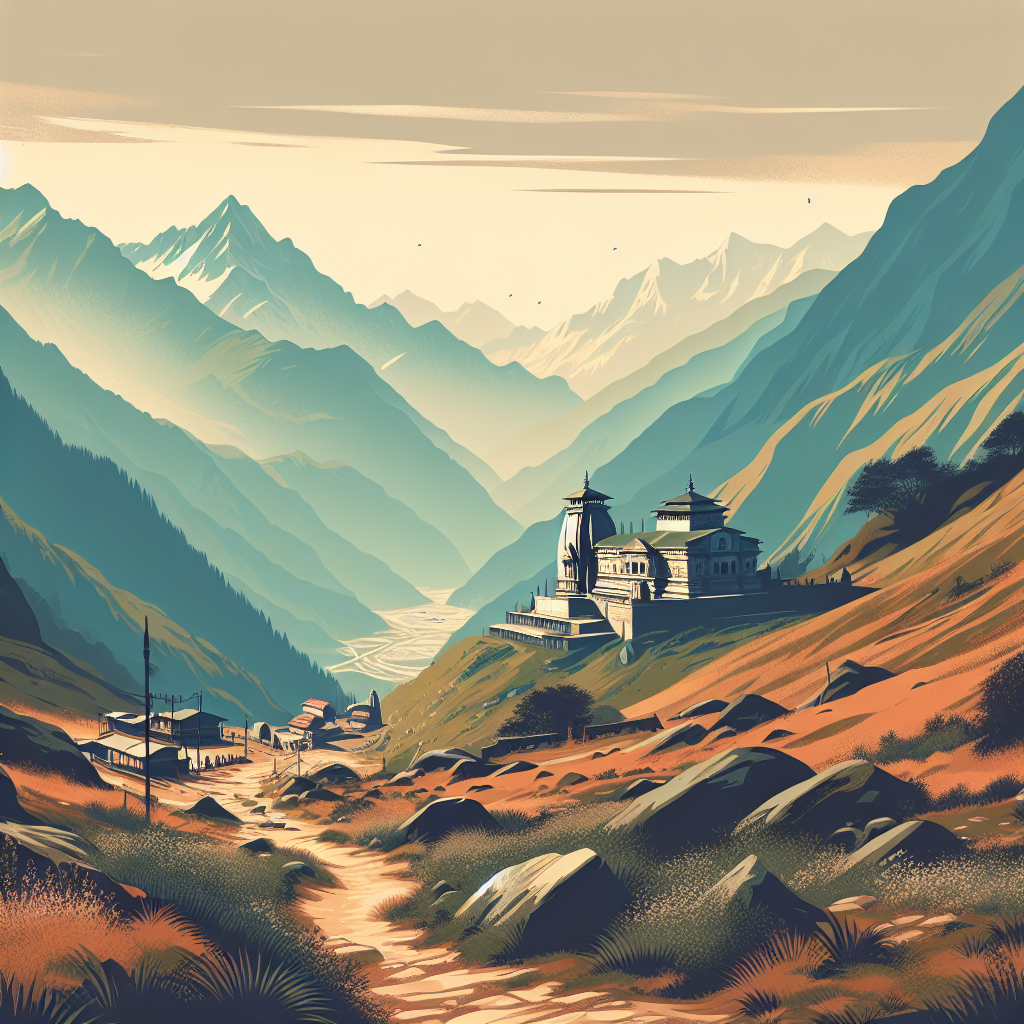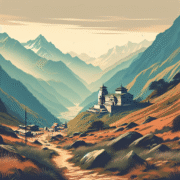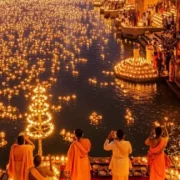
Ultimate Kedarnath Dham Guide: How to Reach, Trek, Get Darshan & Plan Your Pilgrimage
Kedarnath Dham is one of the holiest shrines for Hindus and a pilgrimage that stays with you forever — the stone temple, the chill mountain air, the chants and the view of the snow-clad Mandakini valley. If you are planning this sacred journey, this guide covers everything you need: history and significance, exactly how to reach, trek tips, darshan pointers, best season, a sample itinerary and practical advice to make your pilgrimage safe and spiritually fulfilling.
Why Kedarnath is special
Kedarnath is one of the twelve Jyotirlingas of Lord Shiva and an important stop on the Char Dham and Panch Kedar circuits. The ancient stone temple, believed to be built by Adi Shankaracharya, sits at a high altitude in the Garhwal Himalaya. Pilgrims come here for Shiva’s blessing, to perform rites for ancestors, and to experience the austerity and silence of the mountains. The setting and history combine spirituality with breathtaking natural beauty.
History and religious significance
The legend says the Pandavas sought Shiva for forgiveness after the Mahabharata war; Shiva took refuge in the mountains as a bull. Parts of the bull emerged as different Panch Kedar shrines; Kedarnath is believed to be where Shiva’s hump appeared. Over centuries the temple has been a center of devotion and was revived by Adi Shankaracharya in the 8th century CE. It remains a focal point for devotees seeking moksha and divine grace.
Where is Kedarnath located
Kedarnath is located in the Rudraprayag district of Uttarakhand, beside the Mandakini River, surrounded by peaks and glaciers. The shrine sits at roughly 3,583 metres (about 11,750 feet) above sea level, which makes weather and acclimatisation important considerations for all pilgrims.
Best time to visit
- Season: The temple is typically open from late April/May (around Akshaya Tritiya) until October/November (around Diwali/Bhai Dooj), depending on weather and snow. The exact opening and closing dates vary each year.
- Peak months: May to June and September to October are popular — clear skies, comfortable days and chilly nights.
- Monsoon: July–August sees heavy rainfall and landslide risk; travel becomes difficult and the valley is more hazardous.
- Winter: The temple remains closed and is accessible only to the local priests during winter due to heavy snow.
How to reach Kedarnath
There are three main stages: reach the road head, reach the base village (Gaurikund), and then proceed to Kedarnath either by trek or helicopter.
By air
- The nearest major airport is Jolly Grant, Dehradun. From Dehradun you travel by road to the Uttarakhand hill towns that act as starting points for the trek or helicopter.
By train
- Nearest railheads are Rishikesh and Haridwar. Haridwar has better connectivity across India. From here you travel by road to the trek starting point.
By road
- Road journey from Haridwar/Rishikesh to Sonprayag or Gaurikund passes through scenic towns like Devprayag, Rudraprayag and Guptkashi. Private cars, taxis and buses (state-run and private) operate on this route.
- Expect mountain roads, hairpin bends and variable travel times — plan for slower speeds than plains travel.
Trek from Gaurikund
- The traditional trek starts from Gaurikund and is roughly 14–16 km uphill to Kedarnath. The path is well-trodden but steep in sections. Average walking time is 5–8 hours depending on fitness and pace.
- Facilities such as tea stalls, medical aid points and rest stops are available along the route, especially at popular halting points.
- Pony, palki (palanquin) and porter services are available for those who cannot trek; book through authorised operators and confirm pricing in advance.
Helicopter service
- Helicopter shuttles operate during the pilgrimage season between nearby helipads (commonly Phata/Sonprayag and sometimes other nearby helipads like Guptkashi) and the Kedarnath helipad. This reduces travel time to minutes instead of hours.
- Heli services can be booked online during the yatra season or via local counters. Book early in peak season to avoid long waits. Weather cancellations are common, so have alternate plans.
Permits, registration and safety
- Carry valid photo ID (Aadhaar or passport recommended). Some entry or yatra registrations may be required; check the local administration or temple authority updates for the season you plan to visit.
- Emergency services and basic medical points are available on the route but carry your own basic medicines, altitude sickness tablets (after consulting a doctor), first-aid and copies of prescriptions.
- Mobile network is patchy; consider informing family about possible limited connectivity. Local authorities may set rules for safety, so follow instructions and avoid risky shortcuts.
Darshan timings and puja
The temple usually opens early in the morning and remains accessible through the day, with special aarti and seva timings. Exact daily darshan schedules change with the season and management decisions:
- Early morning puja and aarti are important times for traditional devotees.
- Queue management is strict during peak days. Follow instructions from temple volunteers and staff.
- Photography inside the sanctum is not allowed. Be respectful of the rituals and timings for a smooth darshan.
Where to stay
Accommodation ranges from simple dharamshalas and guest houses to better private hotels in Gaurikund, Sonprayag and within Kedarnath during the season. Book early during peak months. Many camps and guest houses offer basic meals; if you need specific food options, carry some essentials.
Sample itineraries
3-day trek-based pilgrimage (balanced, comfortable)
- Day 1: Travel from Haridwar/Rishikesh to Gaurikund/Sonprayag; rest and prepare for trek.
- Day 2: Early start; trek 14–16 km to Kedarnath; attend evening aarti; stay overnight.
- Day 3: Attend morning darshan and aarti; descend to Gaurikund and return to your onward destination.
2-day helicopter-assisted plan (time-saving)
- Day 1: Travel to helipad base (Phata/Guptkashi); helicopter to Kedarnath; darshan and return by heli same day or stay overnight in Kedarnath depending on availability and booking.
- Day 2: Return to base and continue journey back to plains.
Local tips and practical advice
- Packing: Warm layers, waterproof jacket, comfortable trekking shoes, woollen socks, hat, sunglasses and sunscreen. Carry a small daypack for water and snacks.
- Health: Hydrate well, avoid heavy meals before trek, and ascend at a steady pace to reduce the risk of altitude sickness.
- Money: ATMs are limited; carry sufficient cash and keep smaller notes for local purchases and services.
- Respect: Follow local customs, dress modestly near the temple, and follow temple rules for photography and offerings.
- Environment: Do not litter. Use designated bins; mountain ecology is fragile.
- Weather: Mountain weather changes quickly. Carry rain protection and be prepared for cold nights even in summer.
- Safety: Avoid trekking alone, especially at night. Inform lodge owners or officials of your plans and expected return times.
What to experience at Kedarnath
Beyond the darshan, spend time absorbing the quiet, the chants, and the panoramic view of the Chorabari Glacier and surrounding peaks. Visit nearby Samadhi of Adi Shankaracharya and explore the small local market near the temple for prasad and souvenirs.
Frequently Asked Questions (FAQs)
1. When does the Kedarnath Temple open each year?
The temple typically opens in late April/May (around Akshaya Tritiya) and closes in October/November (around Diwali), but exact dates vary yearly depending on snow and administrative decisions.
2. How long is the trek to Kedarnath and how difficult is it?
The trek from Gaurikund is about 14–16 km and is moderately strenuous. Fit walkers can complete it in 5–8 hours. Use porter or pony services if needed and pace yourself to avoid altitude issues.
3. Can elderly people or children do the trek?
Many elderly pilgrims undertake the journey using ponies or palkis. Children can also go but should be accompanied and monitored. Discuss health and mobility concerns with your doctor before planning.
4. Are helicopter rides reliable and how to book?
Helicopter services run during the yatra season from nearby helipads and can be booked online or through local counters. Flights depend on weather and can be cancelled; always have a contingency plan.
5. Do I need any permit for Kedarnath?
Carry valid photo ID. Local authorities may have registration systems during the season; check current requirements before travel. Follow instructions at checkpoints.
6. What should I carry for darshan and puja offerings?
Simple offerings like flowers and prasad are welcome. Follow temple rules for what can be offered. Avoid plastic packaging and non-biodegradable items.
7. Is there mobile connectivity and ATMs at Kedarnath?
Mobile networks are limited and intermittent. ATMs are scarce; carry enough cash for the trek and local purchases. Inform family about possible limited connectivity.
Conclusion
Kedarnath Dham is a journey of faith, endurance and unforgettable mountain beauty. With the right preparation — checking dates, packing warm gear, planning the trek or helicopter, and respecting local customs — your pilgrimage can be safe, smooth and spiritually uplifting. Step by step, breath by breath, the high trails lead to a calm and timeless sanctum. May your yatra be blessed and filled with peace.



